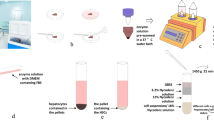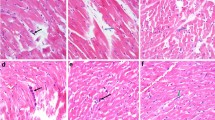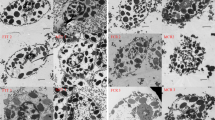Abstract
ONE of us has shown as early as 1929 that the characteristic function of the reticulo-endothelial cells, namely, the granular storage of colloidal substances, can also be studied in surviving tissues1. The Kupffer cells store colloidal gold, silver or carbon in large quantities if these substances are perfused in a suitable solution through the portal system of the isolated liver1–5. Perfusion experiments carried out on rat liver furnished numerous valuable data concerning the mechanism of storage4.
This is a preview of subscription content, access via your institution
Access options
Subscribe to this journal
Receive 51 print issues and online access
$199.00 per year
only $3.90 per issue
Buy this article
- Purchase on Springer Link
- Instant access to full article PDF
Prices may be subject to local taxes which are calculated during checkout
Similar content being viewed by others
References
Jancsó, A., Z. exp. Med., 64, 256 (1929).
Jancsó, N., Klin. Wschr., 10, 537 (1931).
Jancsó, N., Acta Medica Hung., 7, 173 (1955).
Jancsó, N., “Speicherung : Stoffanreicherung im Retikulo-endothel und in der Niere” (Academic Press. Budapest, 1955).
Ferrari, E., and Hober, R., Pflügers Arch., 232, 299 (1933).
Author information
Authors and Affiliations
Rights and permissions
About this article
Cite this article
JANCSÓ, N., JANCSÓ-GÁBOR, A. & BALASSY, J. A Method for in vitro Investigation of the Colloid-storing Function of Histiocytes. Nature 184, 1070–1071 (1959). https://doi.org/10.1038/1841070a0
Issue Date:
DOI: https://doi.org/10.1038/1841070a0
Comments
By submitting a comment you agree to abide by our Terms and Community Guidelines. If you find something abusive or that does not comply with our terms or guidelines please flag it as inappropriate.



